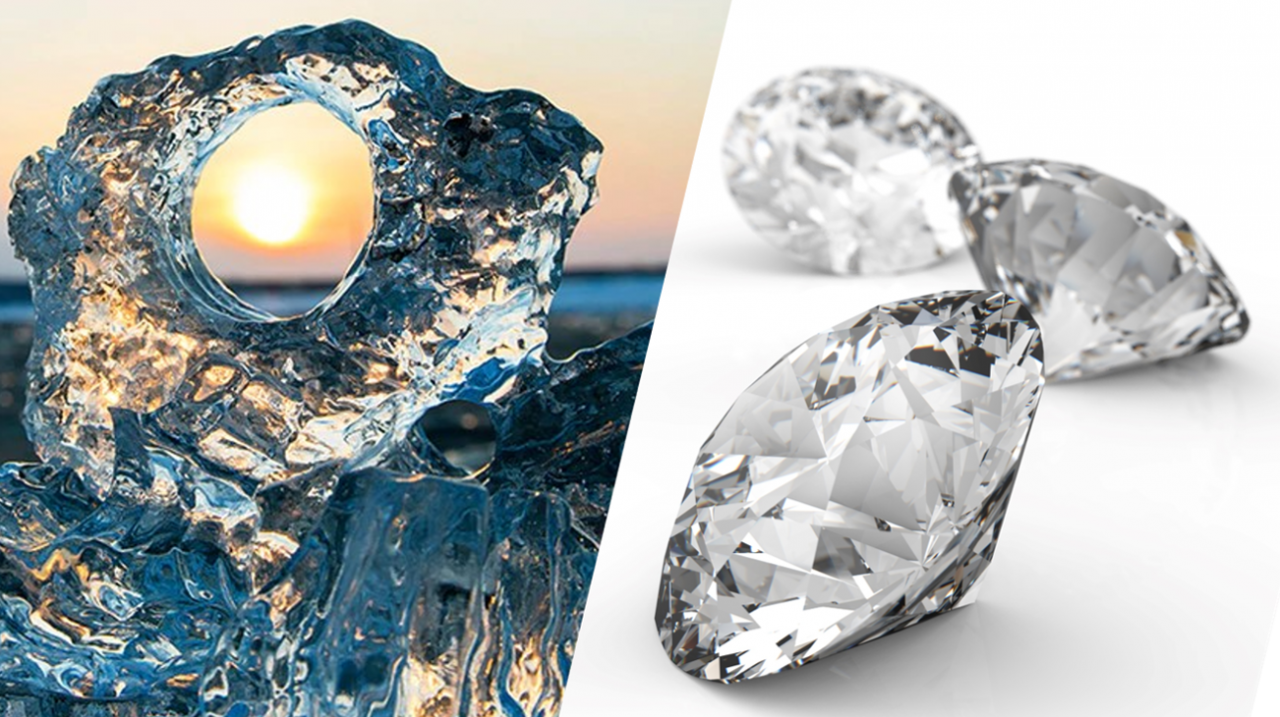1.47 - 1.51 Properties of covalent substances
Look at the images of ice and diamond. In some senses you might say the two substances are similar. Both substances are solid, transparent and crystalline. In terms of bonding, they have similarities too :
- In ice, atoms of oxygen are held to hydrogen atoms by covalent bonds.
- In diamond atoms of carbon are held to other atoms of carbon by covalent bonds.
- the molecules in water are held together by relatively weak intermolecular forces
- the atoms in diamond interconnect with one another to make a giant covalent lattice whose atoms are held together strongly
In this topic we examine the idea of intermolecular forces, what causes the, why some substances have strong forces holding them together and others have only very weak forces between them.
Covalent substances
Students should:
- 1.47 explain why substances with simple molecular structures are gases or liquids, or solids with low melting and boiling points
- 1.48 explain why the melting and boiling points of substances with simple molecular structures increase, in general, with increasing relative molecular mass
This presentation was made by one of my students to compare and contrast the properties of diamond and graphite. These are both forms of the element carbon. They are known as allotropes. Other elements can have allotropes . Red and white phosphorus are two allotropes of phosphorus.
Students should:
- 1.49 explain why substances with giant covalent structures are solids with high melting and boiling points
- 1.50 explain how the structures of diamond, graphite and C60 fullerene influence their physical properties, including electrical conductivity and hardness
- 1.51 know that covalent compounds do not usually conduct electricity
Enter your text here ...
Enter your text here ...
Enter your text here ...
